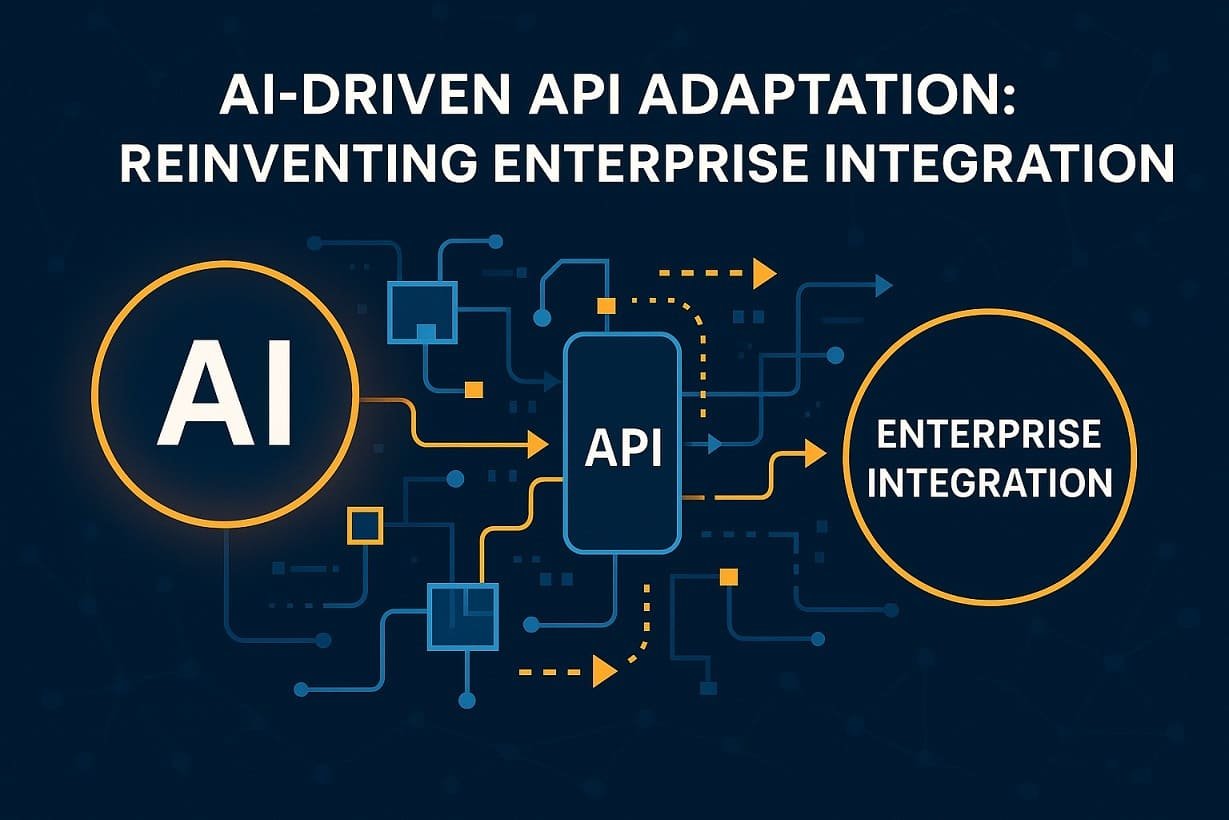
In today’s digital-first world, seamless integration between systems is not a luxury—it’s a necessity. Enterprises rely on complex networks of applications, databases, and services that must communicate effortlessly to deliver business value. However, with the growing heterogeneity of platforms, evolving data models, and continuous updates to APIs, traditional integration strategies are often too rigid or too slow to keep pace.
Enter AI-driven API adaptation—a transformative approach that leverages artificial intelligence to automatically understand, map, and adapt APIs across disparate systems, thereby enabling smarter, faster, and more resilient enterprise integrations.
APIs are the backbone of digital ecosystems. Whether it’s customer data flowing from a CRM into a marketing platform or transactions syncing between a finance tool and an ERP, APIs enable these connections. However, managing APIs across multiple systems presents persistent challenges:
These pain points not only slow down development but also increase operational costs and introduce the risk of data loss or inconsistency.
AI-driven API adaptation refers to the use of machine learning and natural language processing (NLP) techniques to automate the understanding, transformation, and synchronization of APIs. Instead of manually coding middleware to connect APIs, AI algorithms can:
This approach significantly reduces the human effort required for integration while improving adaptability to ongoing changes.
AI can analyze the structure and semantics of different APIs to identify matching fields and endpoints. This capability enables systems to map data flows without explicit, hand-written rules.
When APIs change—such as renaming fields or modifying data formats—AI models can detect these changes, suggest adjustments, or even implement fixes automatically based on historical patterns.
Using NLP, AI tools can allow users to describe integration requirements in plain English. For example, a user could say, “Sync customer records from Salesforce to Oracle every night,” and the AI can translate that into executable logic.
Advanced AI tools continuously monitor API integrations. When an endpoint fails or returns unexpected data, the system can analyze logs, trace errors, and propose or execute corrective measures autonomously.
By automating repetitive integration tasks and reducing reliance on large developer teams for manual API bridging, enterprises can scale faster while significantly lowering long-term integration costs.
Hospitals use AI to integrate patient data from various health information systems (EHRs, labs, billing) into a unified dashboard, even when vendors use different data standards.
Banks adapt to real-time changes in government and regulatory APIs by using AI-driven adapters that ensure compliance without code rewrites.
Retailers automate inventory and order sync between multiple platforms like Shopify, Amazon, and warehouse management systems using AI-based middleware.
While the promise of AI-driven API adaptation is immense, it also presents challenges:
Addressing these concerns with strong governance, transparent AI practices, and platform flexibility is key to sustainable adoption.
As the number of APIs continues to grow and business processes become increasingly complex, the need for intelligent integration platforms will only intensify. AI-driven API adaptation isn’t just a technological upgrade—it’s a strategic enabler for digital transformation.
In the next few years, enterprises that embrace AI for API management will see shorter development cycles, improved system resilience, and faster time to market. Integration will shift from being a bottleneck to becoming a competitive advantage.
The traditional approach to system integration is becoming obsolete in the face of ever-changing APIs and rapid digital expansion. AI-driven API adaptation offers a dynamic, scalable, and intelligent alternative—one that redefines how enterprises build and maintain connections across their IT landscape.
For organizations aiming to stay agile and competitive in the era of cloud, automation, and AI, investing in intelligent API integration is no longer optional—it’s essential.
Q1. What is AI-driven API adaptation?
AI-driven API adaptation is the use of artificial intelligence to automatically analyze, map, and adjust APIs, enabling seamless and intelligent system integration.
Q2. How does AI improve traditional API integration?
AI reduces manual coding, detects schema changes, suggests or auto-creates mappings, and adapts to evolving APIs—making integration faster and more resilient.
Q3. Can AI handle legacy system APIs?
Yes, AI tools can work with legacy systems by interpreting their behavior or documentation and building adapters for smooth interoperability with modern platforms.
Q4. Is AI-based API integration secure?
When properly implemented, AI API tools comply with data security standards and use encryption, access control, and compliance measures for safe data transfer.
Q5. What industries benefit most from AI-driven integration?
Industries like finance, healthcare, retail, logistics, and SaaS benefit greatly by reducing downtime, improving data sync, and enabling real-time automation.
Image Credits: Created by ChatGPT with DALL·E, OpenAI
Comments